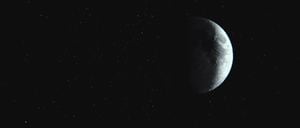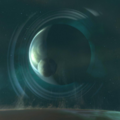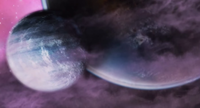Natural satellite
From Halopedia, the Halo wiki
| There is more information available on this subject at Natural satellite on the English Wikipedia. |
| This article does not meet the wiki's general standards and/or standards on layouts. You can help by cleaning this article. |
A natural satellite, more commonly referred to as a moon, is a celestial body that orbits a planet or smaller body, which is called the primary. Moons vary widely in size, surface features, or atmosphere. Some natural satellites were only asteroids captured by a planet's orbit, such as Reach's smaller moon Turul.[1] Other moons are the size of planets, such as Basis which is nearly twice the size of Earth.[2]
The large gas giants of the Sol system have extensive systems of moons, including half a dozen comparable in size to Earth's moon: the four Galilean moons, Saturn's Titan, and Neptune's Triton. Saturn has an additional six mid-sized moons massive enough to have achieved hydrostatic equilibrium, and Uranus has five. Jupiter has more than sixty moons, of which only four are colonized. Those moons are called Jovian Moons. Of the inner planets, Mercury and Venus have no moons at all; Earth has one large moon, Luna, and Mars has two tiny moons, Phobos and Deimos.
Notable moons
Gallery

|
Browse more images in this article's gallery page. |
Csodaszarvas and Turul, the two natural satellites of Reach.


